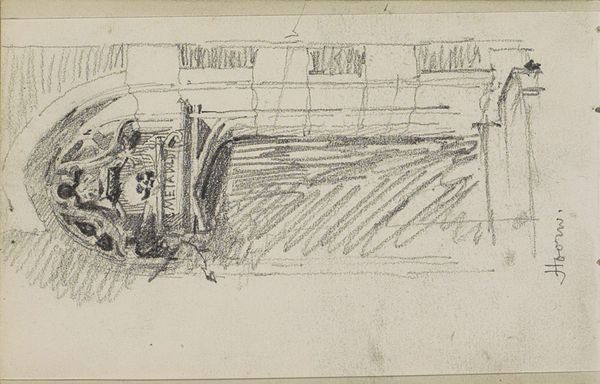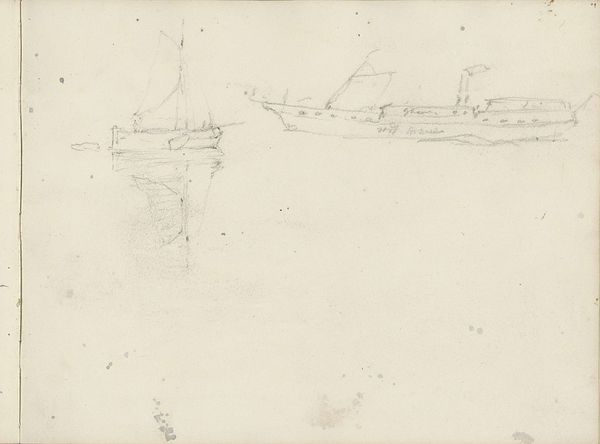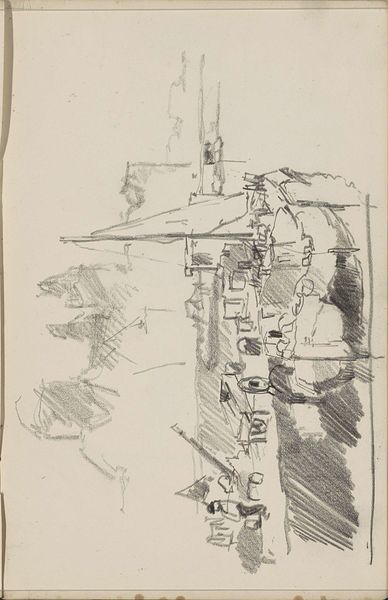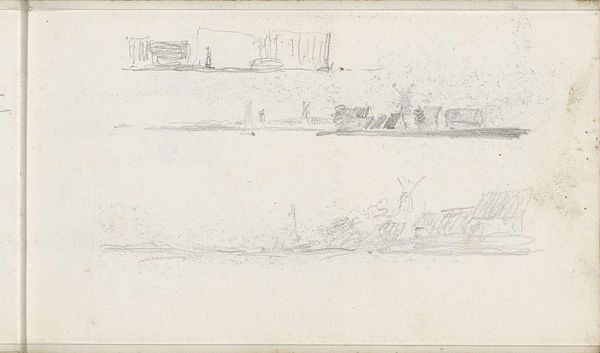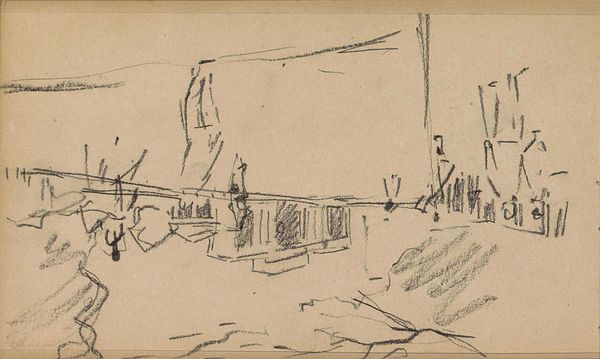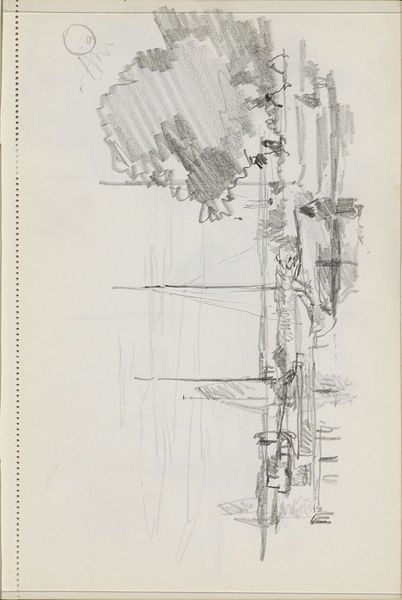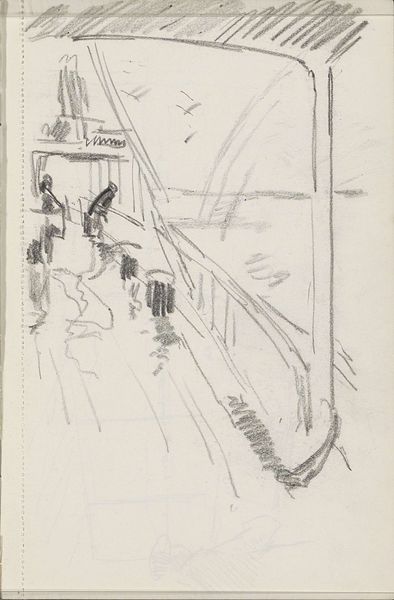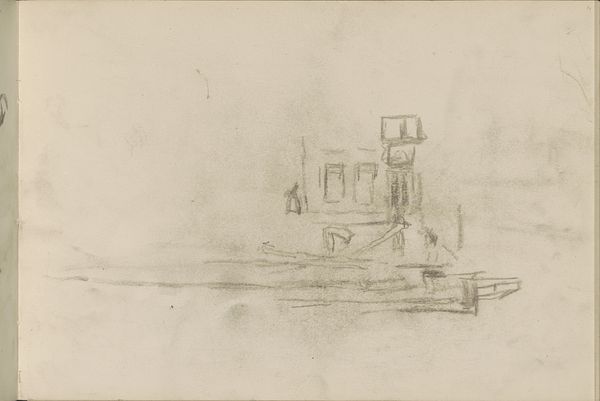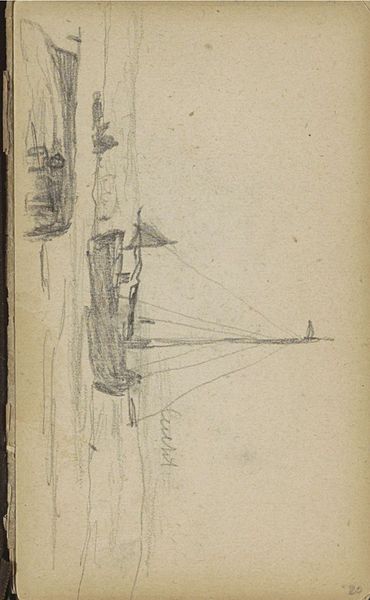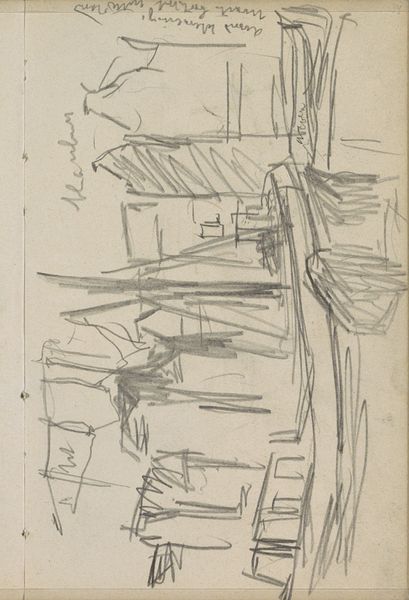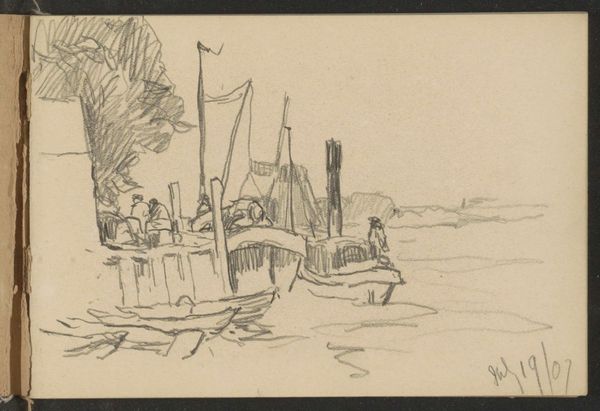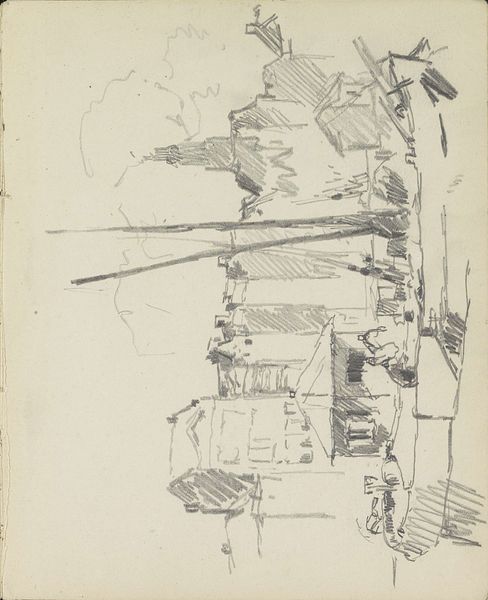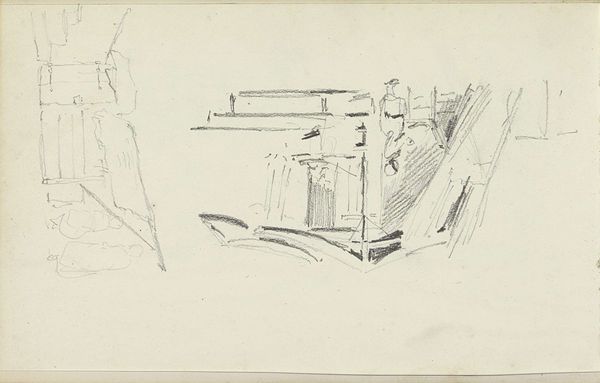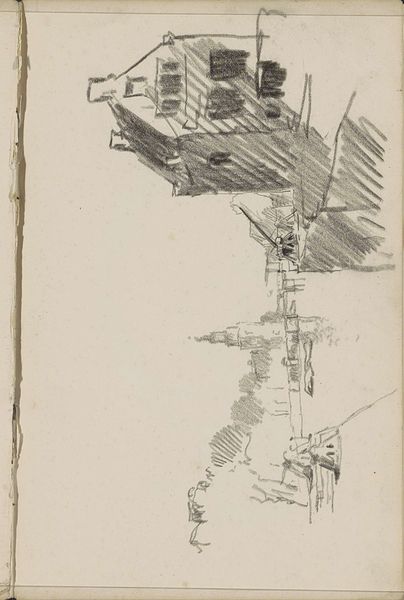
#
quirky sketch
#
sketch book
#
personal sketchbook
#
idea generation sketch
#
sketchwork
#
pen-ink sketch
#
sketchbook drawing
#
storyboard and sketchbook work
#
sketchbook art
#
initial sketch
Copyright: Rijks Museum: Open Domain
Curator: Welcome to this exploration of Isaac Israels' "Platbodemschip aan een kade," a sketch from around 1919, housed right here at the Rijksmuseum. Editor: This feels incredibly immediate, like a fleeting thought captured on paper. There’s a casualness to the line work, but the ship itself is quite striking. How do you interpret this work, especially considering its historical context? Curator: Well, think about 1919. The shadow of World War I still looms large. Israels, known for his society portraits and scenes of modern life, here turns his attention to this grounded ship. What does that image, a ship at rest, suggest to you in that postwar moment? Editor: Maybe a sense of pause, of rebuilding? Like society itself, needing repair and direction? Curator: Precisely. And consider the *platbodemschip* itself. These flat-bottomed boats were essential to Dutch waterways, carrying goods and connecting communities. By sketching it at the quayside, Israels captures a vessel essential to Dutch trade now rendered inactive.. Does this change the way you look at this quick sketch? Does it maybe have an effect on the working class? Editor: Definitely. Knowing its function amplifies that feeling of suspension. The sketch becomes more than just a boat; it becomes a symbol for broader societal concerns. Thank you for broadening my view of what the artwork depicts, giving me something new to think about. Curator: The power of art lies in these dialogues, in uncovering how lines on paper can echo larger societal narratives, giving people a chance to think differently about everyday objects.
Comments
No comments
Be the first to comment and join the conversation on the ultimate creative platform.
